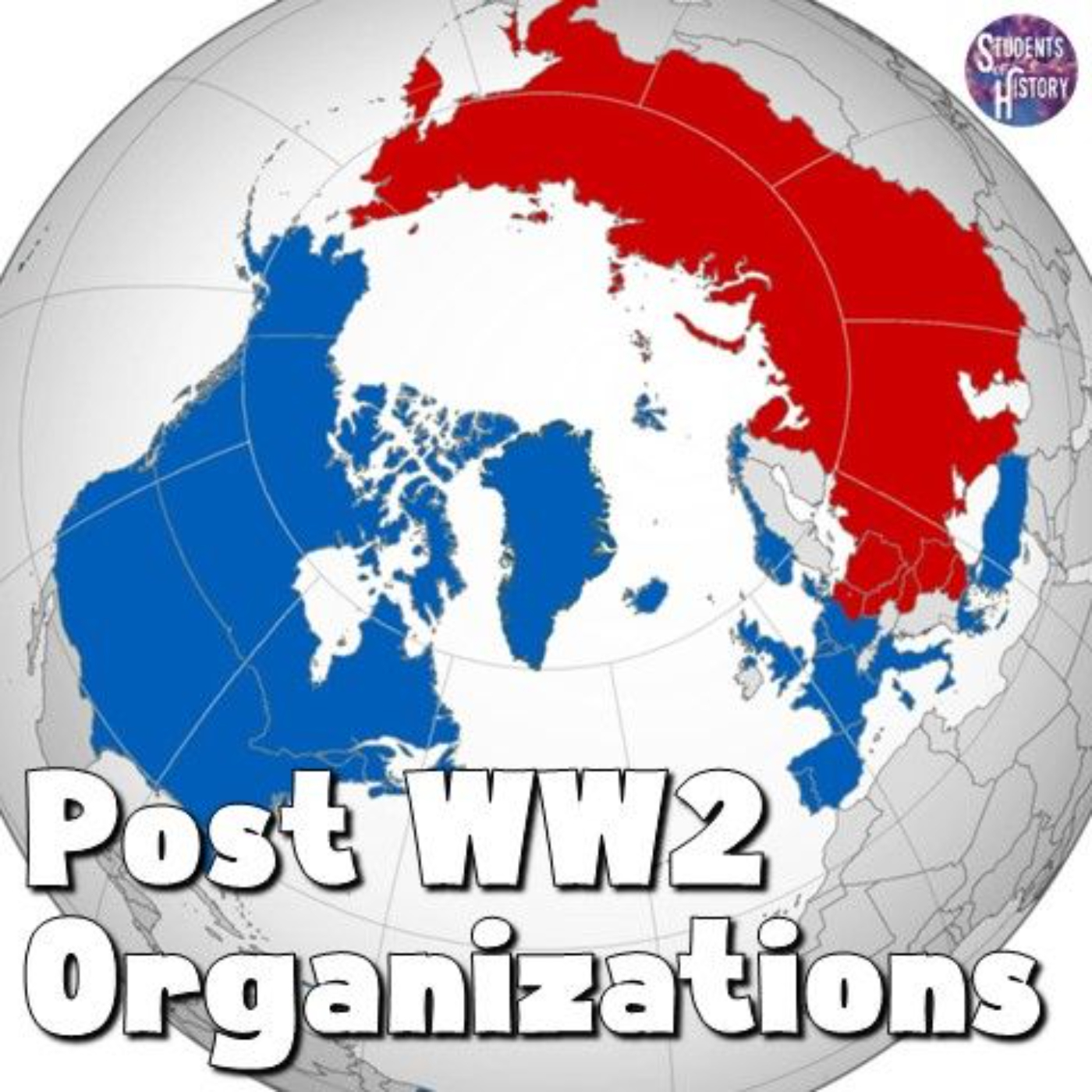Post WW2 & Cold War Organizations

While the League of Nations was a failure after World War 1, most developed countries recognized the need for international organizations to maintain peace and promote prosperity after World War 2.
Fifty nations met in spring 1945 and drafted the UN Charter, creating the United Nations (UN). The UN officially began operations in October 1945 with the objective of maintaining international peace, protecting human rights, delivering humanitarian aid, promoting development, and upholding international law.
The UN began with 51 members but today membership stands at 193, representing most of the world.
In addition to peace-keeping efforts, the UN also performs humanitarian and environmental actions, such as vaccinating children, dealing with climate change, and providing food to people in need.
As the Cold War began, democratic nations began talks about an international military alliance focused to prevent communist aggression.
In 1949, the North Atlantic Treaty was signed by the US and 11 other nations: Belgium, Great Britain, France, Luxembourg, Italy, Iceland, Canada, the Netherlands, Denmark, Norway, and Portugal.
The treaty formed the North Atlantic Treaty Organization (NATO), which still exists today.

NATO is a defensive military alliance. Each member country promised to defend other member countries if they were ever attacked by an external threat. NATO has added new members over the years. Other European States are allowed to join as long as they meet certain requirements and complete a multi-step process involving political dialog and military integration.
In response to the threat of NATO, the Soviet Union and its European satellite states signed the Warsaw Pact in May 1955.
This was also a defensive alliance, led by the Soviet Union and included seven other Eastern European socialist nations: Albania, Poland, Romania, Hungary, East Germany, Czechoslovakia, and Bulgaria.
These countries are often referred to as satellite nations because they were under the influence and pressure of the Soviet Union.
There was never a direct military confrontation between NATO and the Warsaw Pact. Each side used policies designed to promote their own influence around the world.
The Warsaw Pact came to an end in 1991 after East Germany reunified with the West and the other member states left. The collapse of the Soviet Union came soon after.